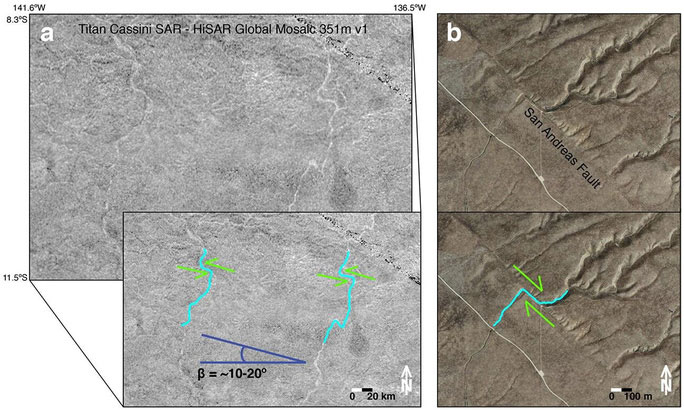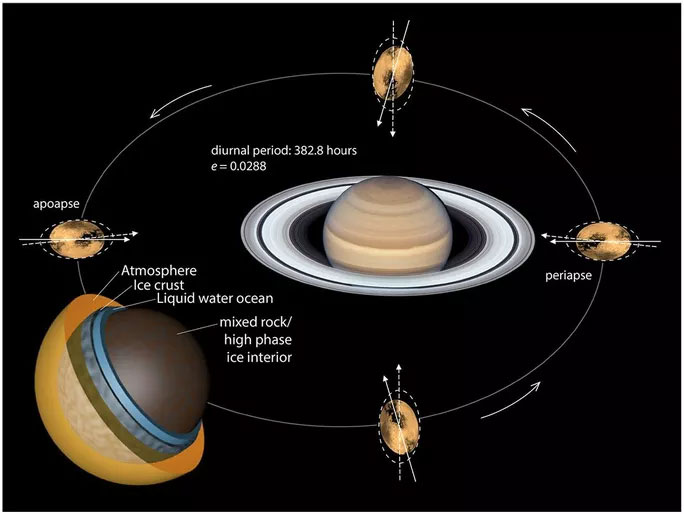One of Saturn’s moons has recently revealed a structure resembling the San Andreas Fault, which could be a precursor to organizing life forms similar to those on Earth.

Strange traces identified on Saturn’s moon Titan – (Photo: University of Hawaii at Manoa).
Revisiting NASA’s data archives, a research team led by the University of Hawaii (USA) has identified a peculiar and relatively new trace on Saturn’s moon Titan, indicating that it may be initiating tectonic activity.
According to Phys.org, the strange trace is believed to be similar to the San Andreas Fault in California (USA). Tectonic activity – plate tectonics on Earth is one of the key factors that supports life on our planet. Plate tectonics and geological activities cause land to shift, continents and oceans to “transform,” while stimulating reactions that generate life and preserve it by maintaining suitable long-term habitats.
For Saturn’s moon Titan, tectonic activity at this time could crack the ancient icy crust and create conditions suitable for life to emerge beneath the subsurface ocean, or help that life develop to a new level if it already exists.

Saturn and Titan with layered structure – (Photo: University of Hawaii at Manoa).
Previously, many NASA studies suggested that the subsurface ocean beneath Titan’s icy crust has hydrothermal systems similar to Earth’s oceans and could harbor life. The upcoming Dragonfly mission aims to reach Titan to search for these hypothetical “extraterrestrial beings.”
In the new study, the faults were found near Titan’s equator and show clear signs of ongoing activity.
“Not only is there a sliding phenomenon (the tectonic plates sliding over each other), but there is also an active deformation mechanism on and within Titan’s subsurface layer, which could serve as a pathway for liquids to rise to the surface,” the Daily Mail quoted Dr. Lilane Burkhard, a member of the research team.
This further reinforces NASA’s 2014 discovery that this moon of Saturn has a “moving island” the size of 58,000 football fields. Titan is significantly younger than Earth, making it plausible at this time for it to begin transforming to give rise to life.
Earlier, another moon of Saturn, Enceladus, and Jupiter’s moon Europa were also thought to show signs of tectonic activity.


















































